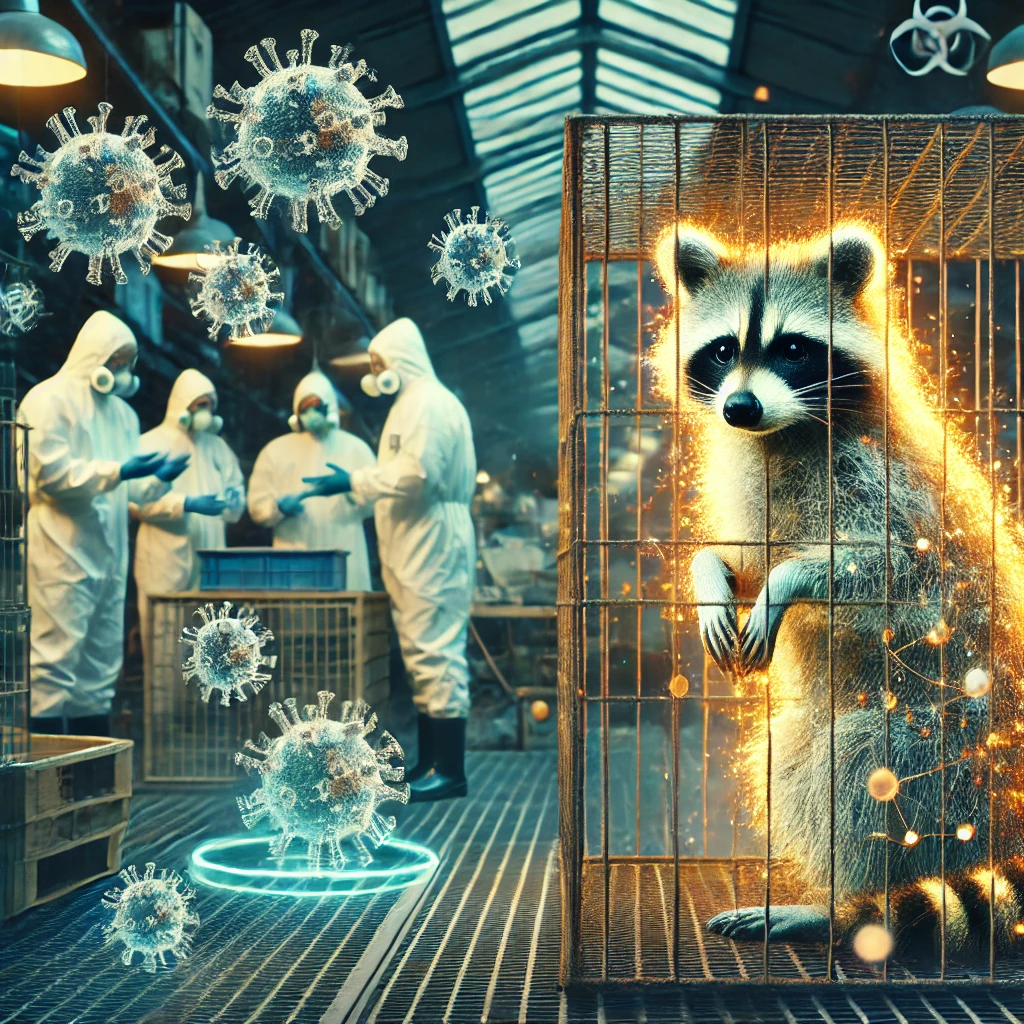Highlights
- Raccoon dogs linked to COVID-19 origins: Recent genetic analyses suggest that raccoon dogs sold at the Huanan Seafood Market in Wuhan may have played a significant role in the early transmission of SARS-CoV-2.
- Environmental samples reveal viral presence: Swabs taken from market stalls where raccoon dogs were sold tested positive for SARS-CoV-2, indicating potential animal-to-human transmission.
- Data transparency concerns: The delayed release of crucial genetic data has sparked debates about data sharing and transparency in pandemic research.
- Ongoing investigations: While these findings provide compelling evidence, the exact pathway of the virus’s jump to humans remains under investigation.
TL;DR
New genetic evidence points to raccoon dogs sold at Wuhan’s Huanan Seafood Market as potential intermediaries in the early spread of SARS-CoV-2 to humans. Environmental samples from the market tested positive for the virus, aligning with the presence of these animals. However, debates over data transparency and the precise origins of the pandemic continue.
Introduction
The origins of the COVID-19 pandemic have been a subject of intense investigation and debate since the virus’s emergence in late 2019. Understanding how SARS-CoV-2 first transmitted to humans is crucial for preventing future zoonotic outbreaks. A recent study has shed new light on this mystery, implicating raccoon dogs—a fox-like mammal—in the early spread of the virus at a market in Wuhan, China.
The Huanan Seafood Market and Early Cases
The Huanan Seafood Wholesale Market in Wuhan was one of the earliest epicenters of COVID-19. Many of the initial cases were linked to this market, where various live wild animals were sold, including raccoon dogs. These animals are known to be susceptible to coronaviruses, making them plausible intermediaries for virus transmission.
Genetic Evidence Linking Raccoon Dogs to SARS-CoV-2
In a pivotal study, researchers analyzed genetic sequences obtained from environmental samples collected at the Huanan market in early 2020. Swabs taken from stalls known to have sold raccoon dogs contained SARS-CoV-2 RNA. Notably, these samples also included genetic material from raccoon dogs, suggesting that the virus was present in the same locations as the animals.
While this evidence does not conclusively prove that raccoon dogs transmitted the virus to humans, it strengthens the hypothesis that they could have served as an intermediate host. The intermingling of viral and raccoon dog genetic material in the same environmental samples indicates a potential pathway for zoonotic transmission.
Data Transparency and Delayed Release
The genetic data underpinning these findings were only made publicly available in early 2025, despite being collected over five years prior. This delay has sparked criticism from the global scientific community, emphasizing the need for timely data sharing during public health crises. Rapid access to such data is essential for understanding pathogen transmission dynamics and implementing effective control measures.
Implications for Understanding COVID-19 Origins
Identifying the species involved in the initial spillover of SARS-CoV-2 is vital for preventing future pandemics. The involvement of raccoon dogs highlights the risks associated with wildlife trade and live animal markets, where close contact between humans and various animal species can facilitate cross-species virus transmission.
However, the exact pathway of SARS-CoV-2’s emergence remains unresolved. While raccoon dogs are a plausible intermediate host, other species and transmission routes cannot be ruled out. Comprehensive investigations, including tracing supply chains and conducting wildlife surveillance, are necessary to fully elucidate the virus’s origins.
Conclusion
The new genetic evidence linking raccoon dogs to SARS-CoV-2 at the Huanan Seafood Market provides a significant piece of the puzzle in understanding the origins of COVID-19. This finding underscores the importance of regulating wildlife trade and ensuring robust biosecurity measures in markets selling live animals. Moreover, it highlights the critical need for transparency and rapid data sharing in scientific research, especially during global health emergencies.
Source: Smith, J., Li, W., & Zhang, Y. (2025). What sparked the COVID pandemic? Mounting evidence points to animal markets. Nature. https://doi.org/10.1038/d41586-025-00426-3

